Table of Contents
Nice France History Facts
1. The City of Nice was Designed by Architects from Turin
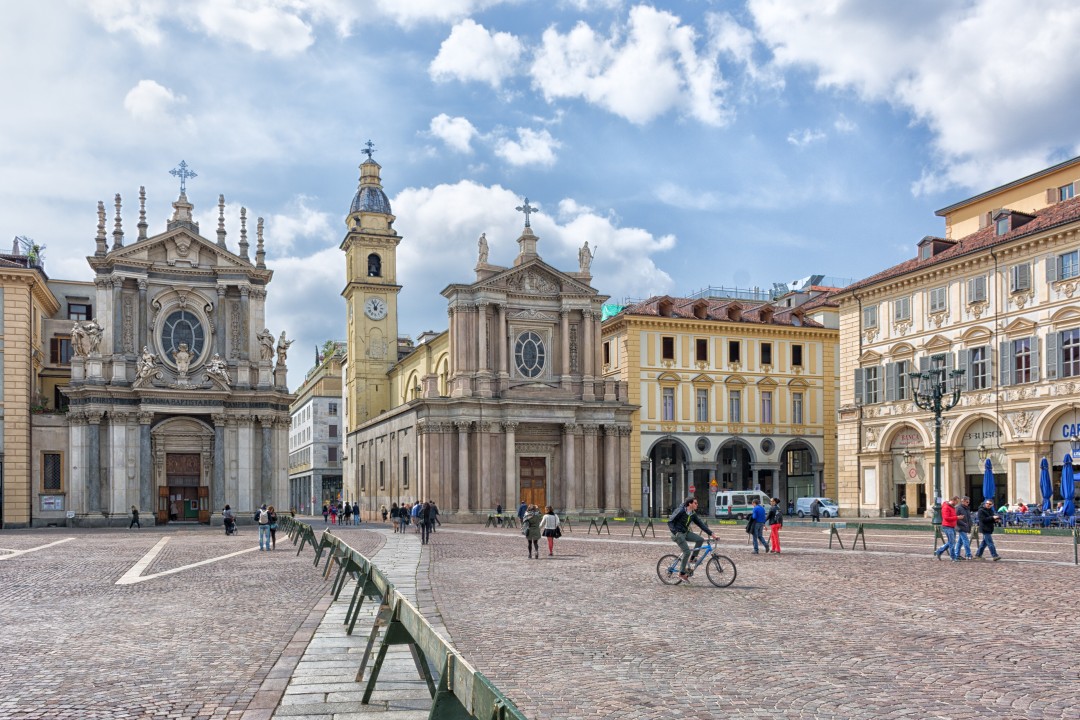
A known fact about Nice that not a lot of people are aware of is that it hasn’t always been French. Originally, the county of Nice belonged to the House of Savoy, the ruling family of the Kingdom of Sardinia. Hence why you’ll find many people suggesting that Nice feels a lot more Italian than French.
As Nice began to build and establish itself, architects based much of the main squares off the architecture back in Turin, the capital of the Savoy Empire. Place Garibaldi in particular greatly resembles the plazas found in Turin. Even the centre statue of Giuseppe Garibaldi is facing in the direction of Turin, said to be looking longingly towards the Italian Kingdom that his home county of Nice never became a part of.
2. Giuseppe Garibaldi
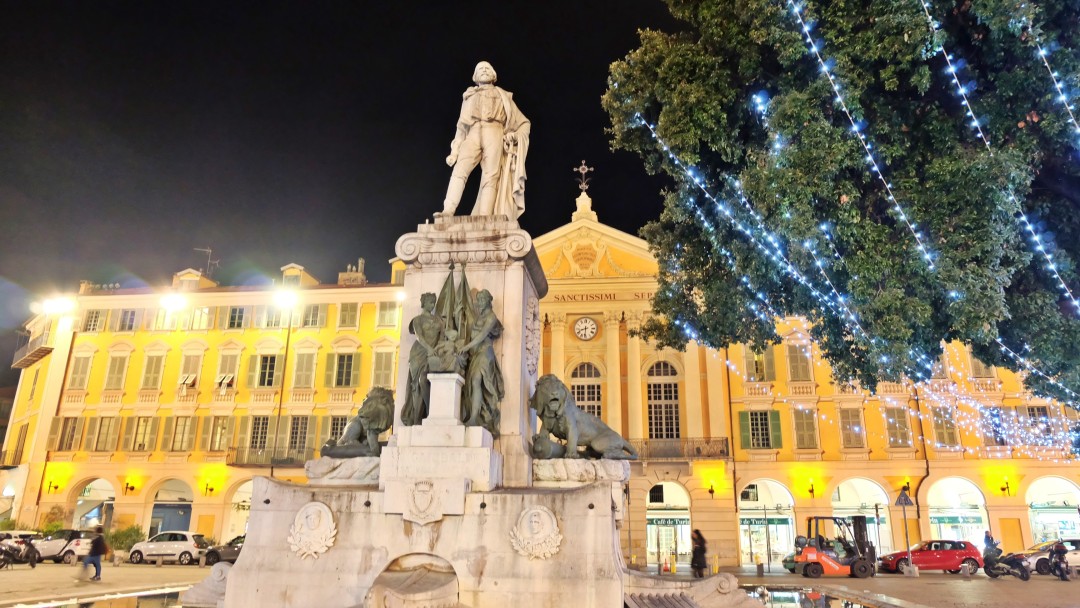
Born and raised here in Nice, Giuseppe Garibaldi was a General of the Royal Italian Army at a time before Nice became French. Before the 1860’s, Italy did not exist. There instead was a collection of independent kingdoms all ruled by their own figurehead. Nice under the rulership of the Kingdom of Sardinia was no exception.
It was Garibaldi’s dream to one day have a unified Italy. So, when the Italian Civil War began, he led a force of a thousand volunteers to aid in the fight. Garibaldi and his comrades triumphed, and Italy became a united nation with Rome as its capital. Unfortunately, however, Garibaldi returned to his home city of Nice only to find that it was not a part of this unified country that he had fought so hard for. It was instead ceded to France in a secret deal between Napoleon III and the King of Sardinia. Hence why his statue is depicted some what sad as it faces the direction of Italy.
3. Castle Hill
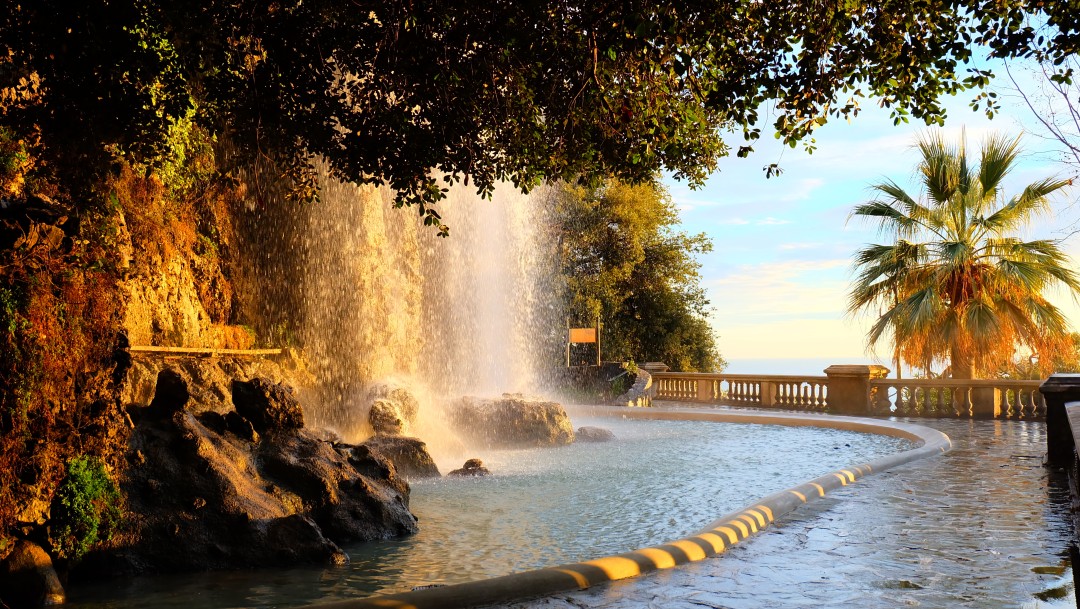
Despite its rather misleading name, there is no longer a castle still perched atop Castle Hill. Originally, the main city of Nice was right here, protected by the most impenetrable fortress on the entire Mediterranean coast. Many had tried countless time to overtake the stronghold, but with no success. Or at least that was until 1706 when King Louis XIV sent his French army to invade.
By sheer stroke of luck, a cannonball lobbed over the fortress walls flew into a tiny window and landed in the ammunition storage, causing a massive explosion that blew out the side out of the castle, allowing the enemies to invade. Considering how difficult it had been to conquer in the first place, King Louis did not want Nice to regain its stronghold and ordered his men to wipe out the entire village. So you have him to blame for there no longer being a medieval castle in Nice.
However, in place of the old village, La Colline du Château is now home to a beautiful green park. It’s a great place to come and hangout or have a picnic. You’ll always find it bustling with activity. It’s also possibly one of the best 360-degree panoramic looking points in the city, with a perfect view of the Promenade des Anglais and the stunning Old Town.
4. Promenade Des Anglais
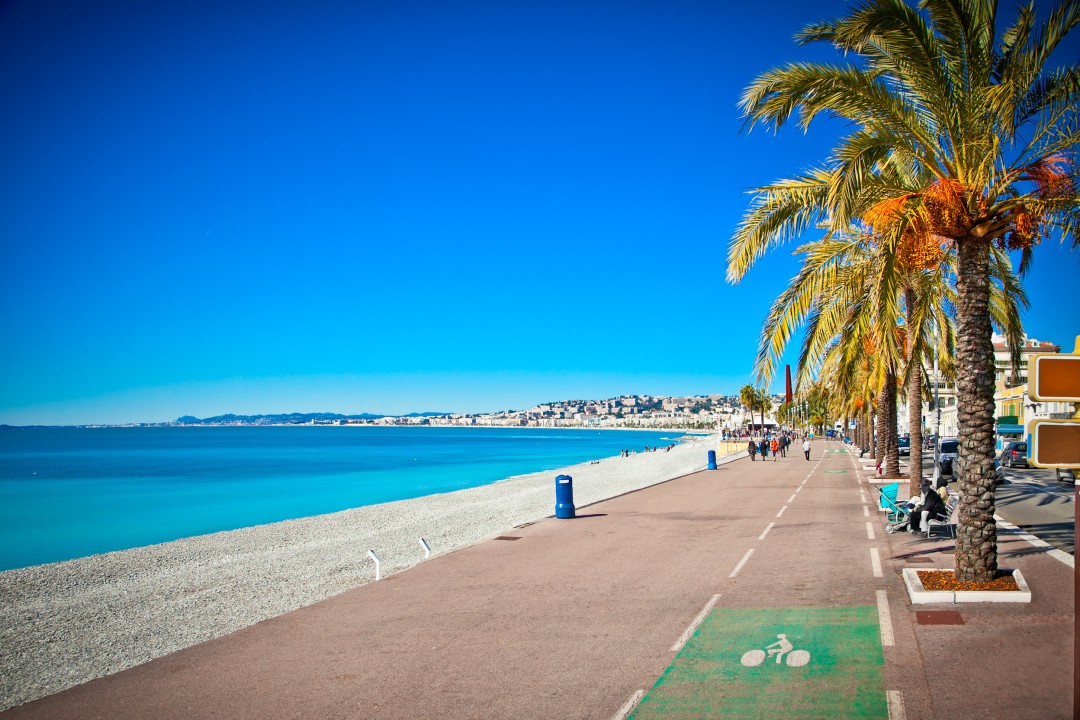
Until the end of the 18th century, the Côte d’Azur was a remote and impoverished region, known mostly for fishing and its ancient olive groves. By the end of the 1700’s however, a select few novelists and scholars began to write about their time spent on the Southeast coast of France, bringing its attention to the British aristocracy. At about the same time, a Scottish doctor, John Brown, became famous for prescribing what he called climato-therapy (a change in climate) to cure a variety of diseases including tuberculosis.
This led to a lot of very rich British aristocrats coming to the Riviera to avoid illness. Over time however, the aristocracy fell in love with Nice and its breathtaking landscape, and soon began returning to the coast for reasons other than their ailments. Within a few short years, Nice and the Riviera became a winter resort for monarchs and aristocrats alike! Queen Victoria was a frequent visitor to Nice. As was Prince Edward of Wales and many of the Russian Tsars and Tsarinas.
Over time, the wealthy British aristocrats, fell out of favour with the once popular Ponchettes Terrace walkways in the heart of the Old Town. As a result, an Anglican pastor set up a charity to collect funds from his compatriots to build a public walkway in place of the dirt track that ran along the shore. And so was born the La Promenade des Anglais or ‘Walkway of the British’.
5. The Blue Chairs
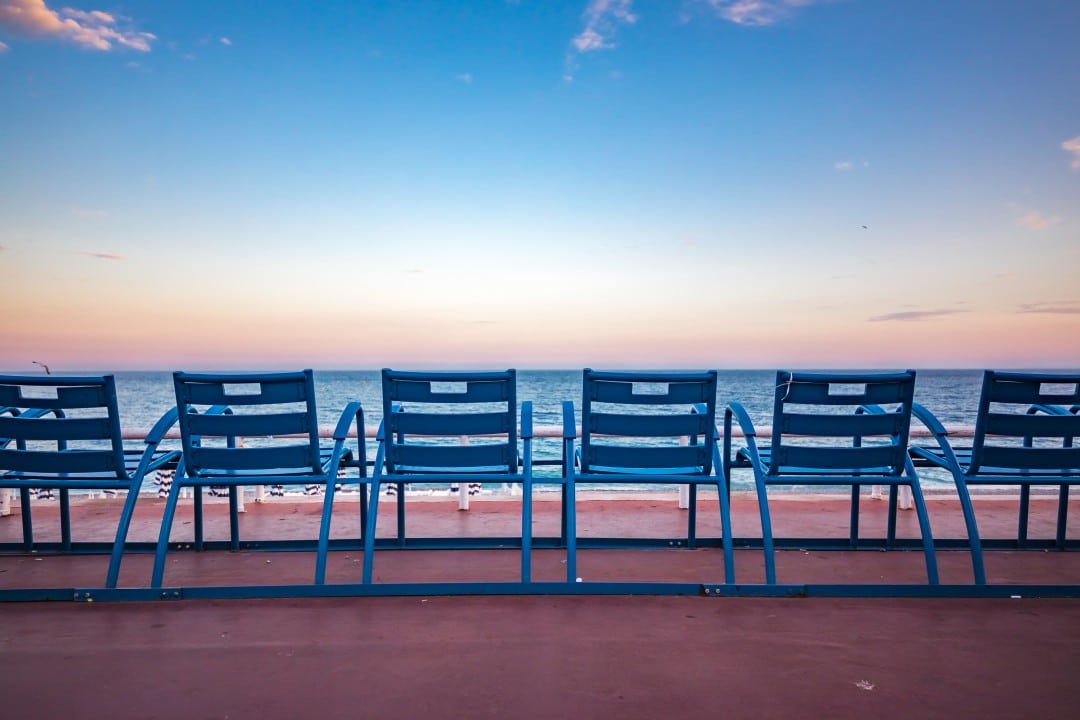
Famous throughout the world, the Blue Chairs are inseparable from the image of Nice. The history of these iconic chairs dates back to the 1950s, when 800 chairs were made to line the Promenade des Anglais. Created by Charles Tordo, these chairs were originally to be rented out. However, people began to steal the chairs and take them home as souvenirs of sorts. As a result, the Blue Chairs were no longer given separately, but instead chained downed together all along the promenade.
Some of the original hand-crafted chairs (or at least what was left of them) are on display at the MAMAC; the Museums of Modern and Contemporary Art.
6. Nice Carnival
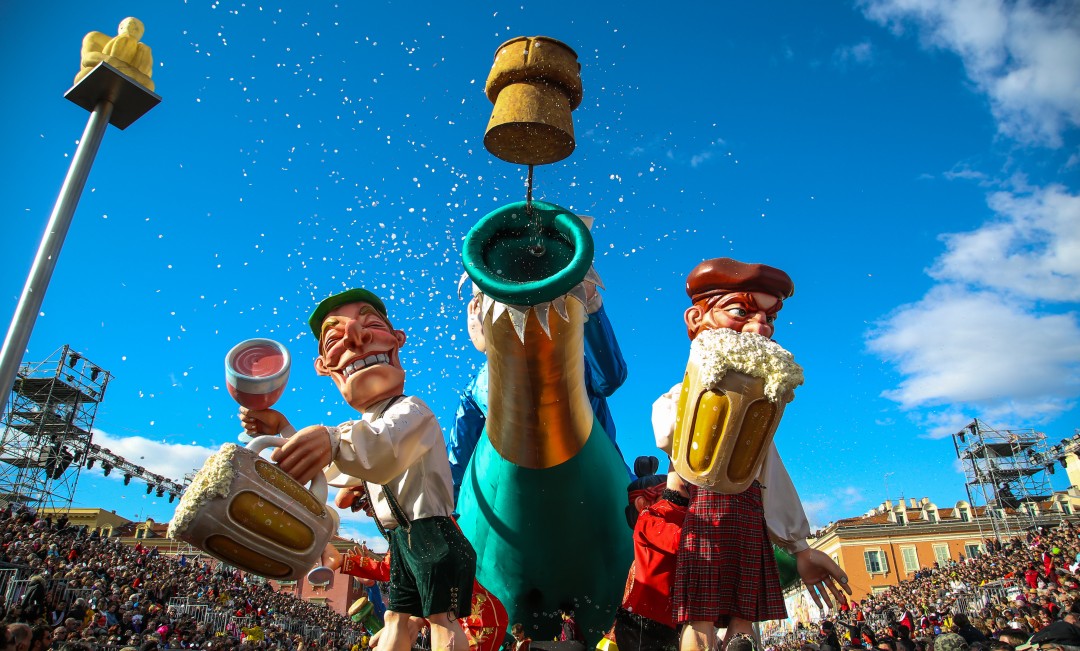
Carnival is one of the most internationally celebrated festivals in the world. Held in February, its usually a two-week long celebration full of spectacular parades, vibrant colours and whimsical performers. Usually, when we think of Carnival, we automatically think of the Rio de Janeiro Carnival. And how could we not? Afterall, it is the biggest Carnival in the world. But did you know that Nice is home to the third biggest in the world?!
The earliest mention of the Nice Carnival goes all the way back to 1294, when masked balls would be held most evenings and locals would take to the streets of the Old Town to celebrate. Traditions which have mostly been upheld even to this day. Today, the Carnival goes through the city’s main square of Place Masséna and down along the Promenade. Hundreds of thousands of tourists come to Nice specially for the event. The parades give way to extravagant, satirical floats and puppets, while onlookers can enjoy the spectacle from the seating areas or the public stands. The Carnival’s most popular days are that of the Bataille de Fleurs or ‘Battle of the Flowers’. As well as the fireworks display that is often held on the last day.
7. The Origin of Nice –> Nikaia
The history of Nice is certainly a long and fascinating one. The first known settlers in the city were prehistoric primitive people around 400,000 years ago. However, it was the proceeding civilisation who made the real impact on Nice. Around 350 BC, Greek warriors, returning from a victorious battle in Marseille, decided to establish a permanent settlement right here in Nice. Still celebrating their victory, they called the new city Nikaia, after the Greek Goddess of Victory, Nike. Yes, that’s right, the same name as the sports brand!
Many civilisations followed after, including the Romans. However, the city’s Greek ancestry is still very much celebrated to this day. In fact, within the heart of the city stands our beloved statue of the Greek God Apollo!
8. The Statue of Apollo
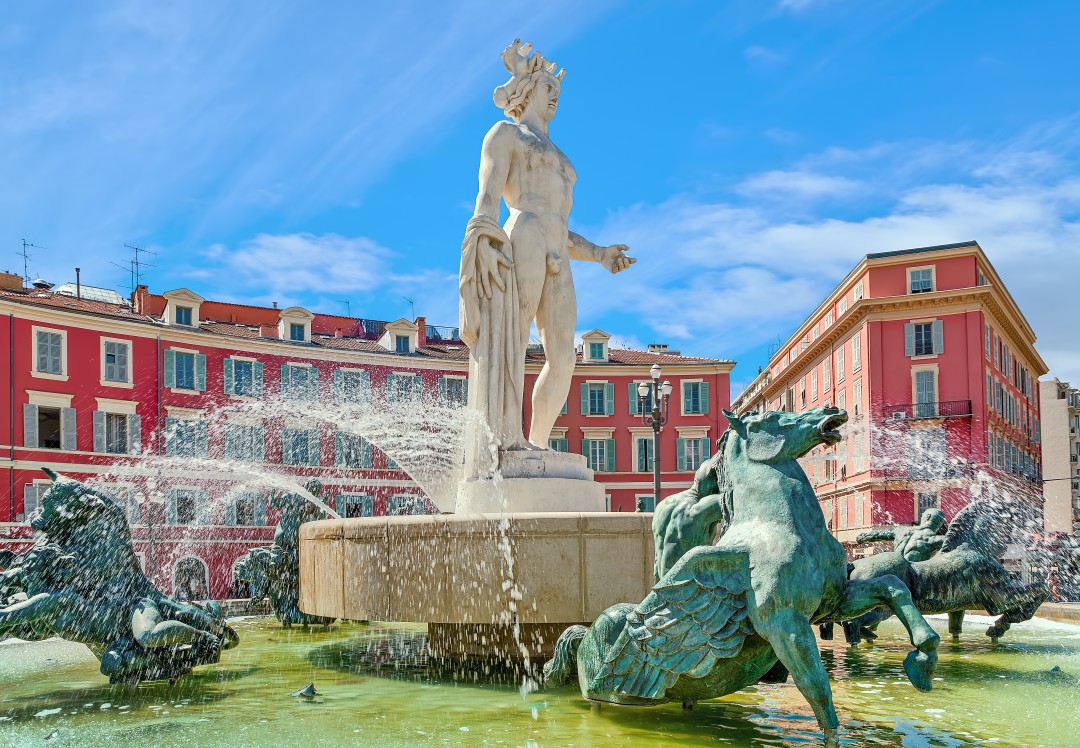
Within the heart of Nice, you’ll find our main square of Place Masséna. In the centre of which sits our beloved ‘Sun Fountain’, or more specifically, our Statue of Apollo. The fountain is somewhat of a designated meeting point for most of us here in Nice. It’s even where we meet for our Walking Tours. The fountain is also often a centre of our celebrations and quite regularly you’ll find Apollo dressed up and decorated to blend in with the theme.
However, Apollo wasn’t always as loved by the Niçoise as he is today. When he was originally placed here in 1956, it was a controversial topic for two reasons.
The first issue people had was with the crown of 4 horses which sat atop Apollo’s head. In Greek mythology, Apollo’s job is to carry the sun across the sky on his golden horse-drawn chariot. The same year as the statue’s creation, the Renault car company came out with a new model called the Renault 4CV or ‘4 Horsepower’. The people of Nice took one look at the 4 horses perched on Apollo’s head and speculated that it may have been an advertisement for the car.
The second problem was a little further down the nude sculpture. Some of the more conservative women of Nice thought that Apollo’s manhood was too big (Others thought it was too small). And so the artist, in an attempt to appease the masses, did the unspeakable act of taking a chisel, and cutting Apollo down to half size. The people of Nice however still weren’t happy, and petitioned to have to statue removed. And so, the city of Nice dismantled the Fountain and banished it to the outskirts of the city where it became a forgotten memory.
Or at least that was the case until 2007 when a local journalist wrote about the abandoned monument in the local newspaper. The people of Nice took an interest in the sculpture, and petitioned to have it returned to its rightful place. Which it was. And since then, Apollo has stood right here for all our lovely locals and tourists to ogle at and enjoy (still only at half size though).
9. The Origin of the Canon

If you visit Nice, you may notice a rather loud explosion which seems to go off everyday at 12 pm. Well that’s our noon-time canon!
Scotsman, Sir. Thomas Coventry, was one of many British aristocrats living in Nice during the late 1800’s. Most days around noon, while Thomas was waiting to have lunch with his wife, his wife would lose track of time and still be down along the promenade, relaxing and chatting with her friends.
Frustrated, Sir. Thomas went to the mayor of Nice and proposed a daily noon canon shot like back in his home village of Scotland. The mayor agreed and so started the tradition of the canon. Even after Thomas and his wife returned to Scotland, the people of Nice petitioned to keep the tradition in place. And so it has continued since then. No longer a canon though. We instead use a small firework.
10. The Casino de la Jetée
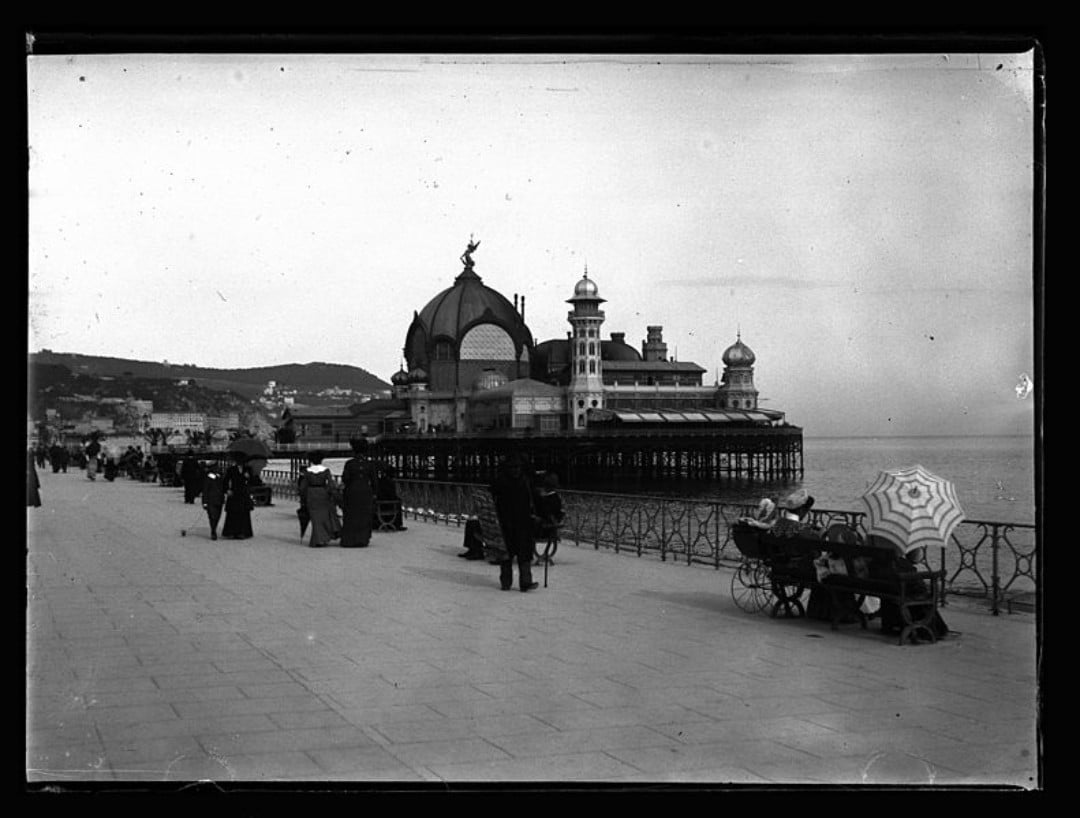
During Nice’s golden age through the 1920’s, the Riviera’s best known landmark was an opulent Belle Époque Casino perched at the end of a long pier which seemed to float in the bay. The Casino, fraught with mafia and corruption, was a major player in Nice’s vicious casino wars.
If you were to walk along the Promenade today, you’ll notice that nothing remains of the Casino but the long pier upon which it once sat. The reason for this? The Nazi troops.
During the events of WW2, German forces occupied the entirety of France, Nice was no exception. The Casino met a sad end when the Nazi troops dismantled it for its metal, which was used to barricade the beaches in case of an Allied landing. By the summer of 1944, the beaches of Nice were peppered with mines and covered with barbed wire and anti-aircraft weapons built from the remains of the Casino de la Jetée. The people of Nice remained under German occupation until the public execution of 23 young individuals set them over the edge.
An army of 350 Niçoise soldiers went up against 2000 armed Germans. However, their guerrilla tactics and the threat of Allied forces just down the coast caused the German soldiers to flee. The Battle cost the lives of 31 people with 280 injured; while the Germans lost 25 of their men and 105 were taken prisoner. Some of those prisoners were later made to clear the beaches of mines, and several died from exploding mines that they themselves had placed.
11. The Heroine of Nice –> Catherine Ségurane

During the 16th century, the city of Nice was under attack from Franco-Turkish troops. As the foreign forces began to scale Nice’s fortified walls, a Turkish soldier attempted to plant one of their flags upon the ramparts as a sign of their conquest. However, as the story goes, the men heard a fierce cry. Only to turn and see Catherine Ségurane, a laundry maid, running towards them, brandishing her clothesline.
She bashed the Turkish soldier on the head. Before taking the flag and ripping it up into pieces. Other sources claim she publicly used the flag to wipe her bottom, humiliating the Turkish troops. However, which story is the truth we’ll never know for certain. Either way, the bravery showed by Catherine on this day received acknowledgement from the Niçoise. And she has become an emblem of Nice ever since.
12. Palais Lascaris
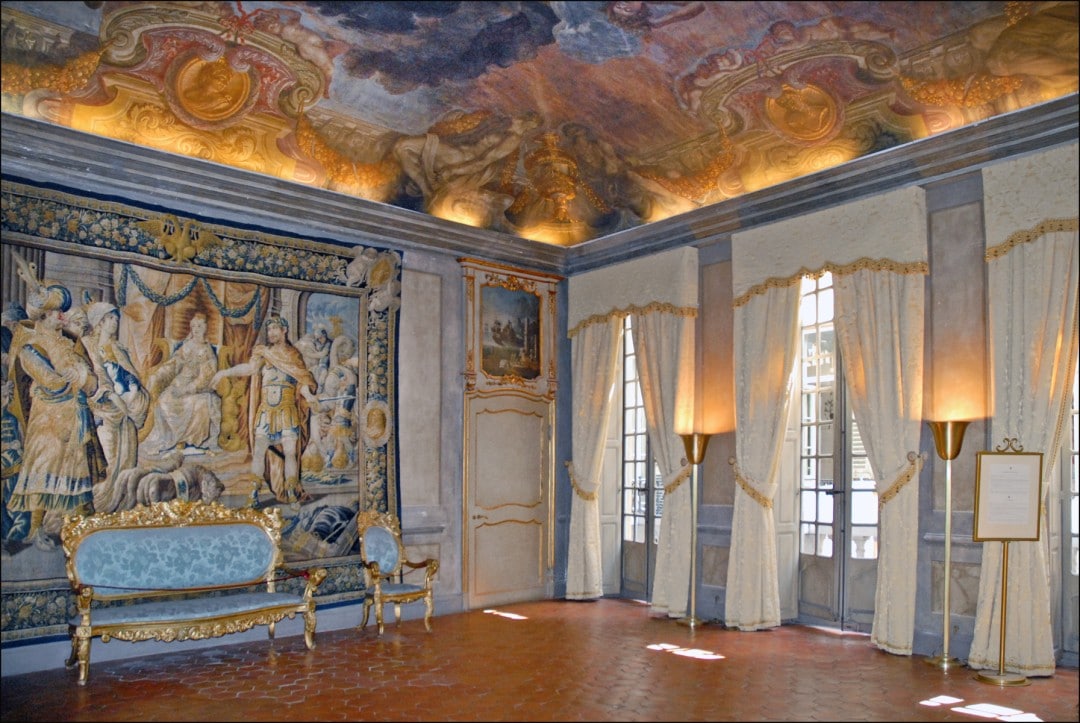
The Palais Lascaris is one of many municipal museums here in Nice. Originally, this 17th century Baroque-style Palace served as the home of the Lascaris family of Ventimiglia. However, in 1942 the city of Nice bought the Palais Lascaris and opened it to the public as a museum. Originally, the Palace served as an insight into the life of noble families during the 17th to 19th centuries. However, some 30 years later, the museums function changed.
Today, the Palais Lascaris is home to an impressive collection of over 500 historical instruments. Making it the second most impressive collection in all of France. The museums three floors are not just impressive for the magnificent instruments which reside within them. But also for the remarkable frescoes coating the walls and ceilings, as well as the authentic restored rooms and chambers.
13. St. Nicholas Orthodox Cathedral
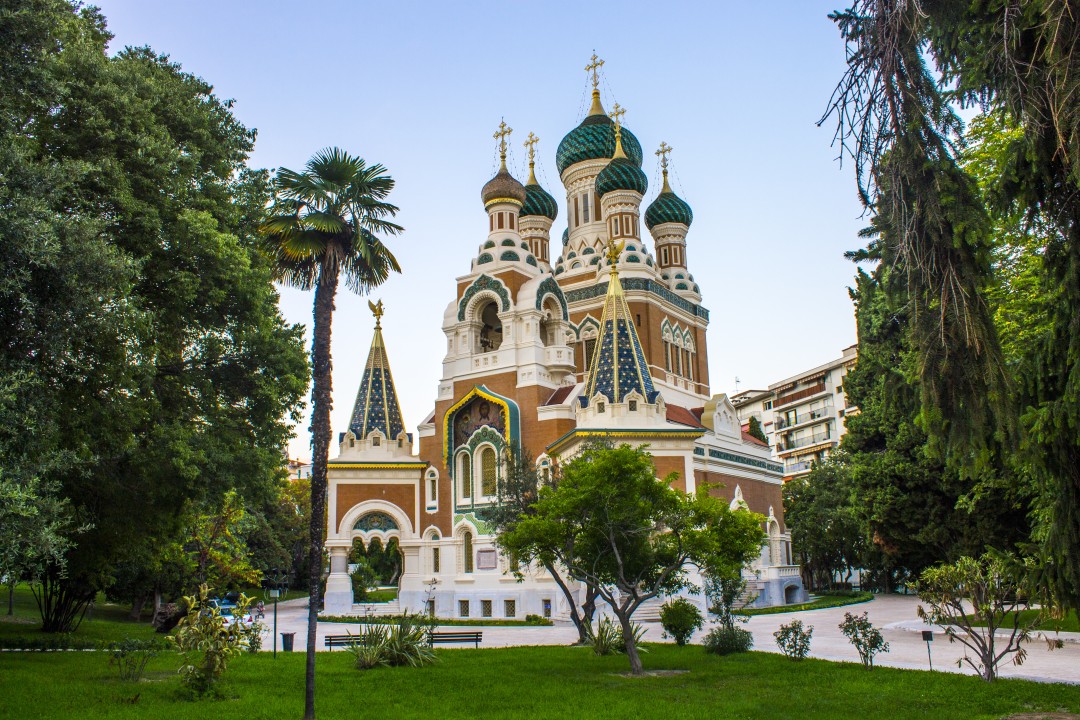
After losing in the Crimean War of 1856, Russia could not keep its war vessels in the Black Sea any longer. Still needing a naval base in the Mediterranean Sea, they stationed their fleet in the Villefranche-sur-Mer harbour. Between this and the French Riviera’s growing population as a winter getaway, a large Russian aristocratic community began to develop here, especially in Nice. The Tzar Alexander II became a frequent visitor and often brought his wife and children along with him. His eldest son, Nicolas, died tragically here in Nice at the age of just 22 due to illness. His mother ordered the creation of the St. Nicholas Cathedral in his honour on the very grounds where he had passed away. Fascinatingly, this cathedral is the largest Russian Orthodox place of worship outside the geographical and political boundaries of Russia.
Soon, the need for a Russian cemetery lead to the creation of the Orthodox cemetery of Caucade on a hill west of the city. Several members of famous Russian families rest here.
14. The Russian Cemetery
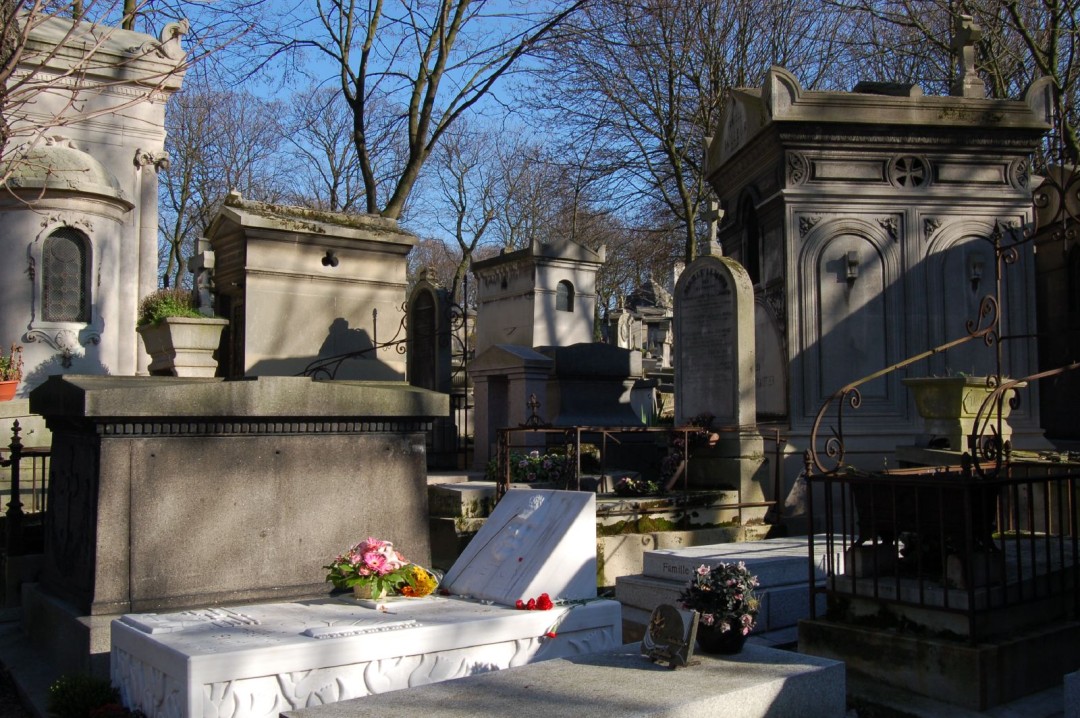
Thanks to its large Russian community, there was soon a demand for an Orthodox cemetery. And so, came about the building of the Russian cemetery of Caucade. Sitting atop the hill of Caucade, the cemetery undoubtedly has one of the most beautiful views of the coast and the sea. The cemetery houses the resting places of many famous Russian figures. Among the 900 tombs, the cemetery is even home to members of the Royal families, such as Princess Yurievskaya and Prince Alexandrovich Romanov.
Nice Interesting Facts
15. Albert Spaggiari –> The Bank Robbery of the Century
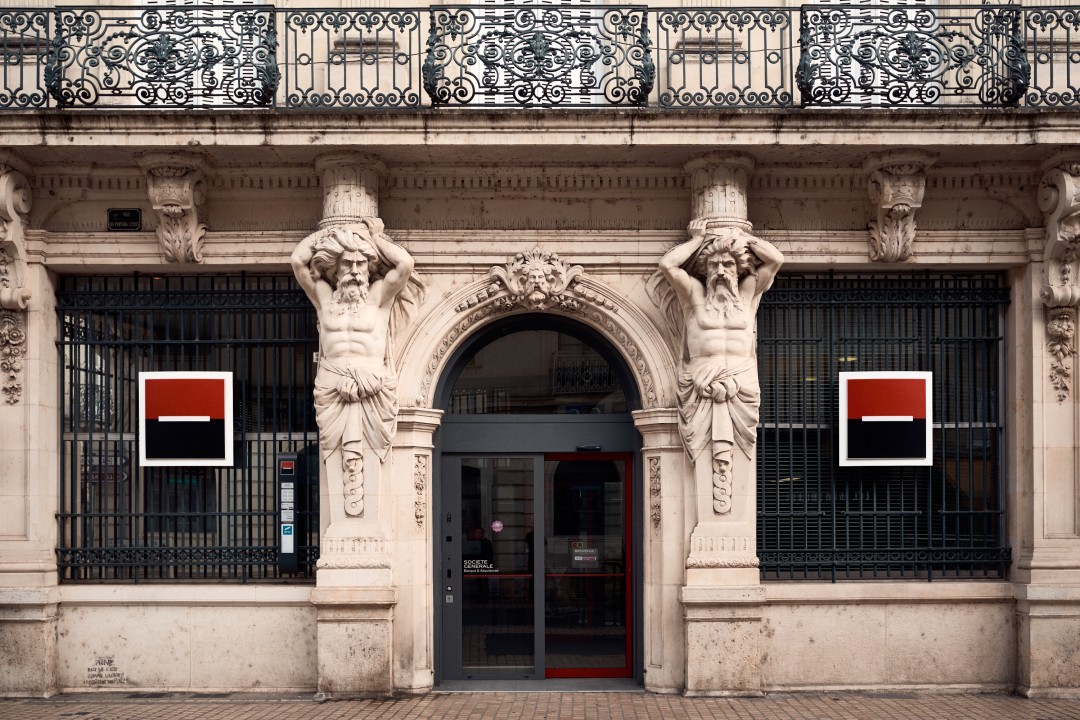
Albert Spaggiari, born and raised right here in Nice, is a rather infamous local celebrity. Spaggiari happened to come across a set of prints which depicted a series of tunnels that flowed beneath the city. He noticed that one of these tunnels just so happened to run directly under the Société Generale Bank. And so, Spaggiari devised a plan.
To start off, Spaggiari of course had to inspect the security system used in the Bank Vaults. He rented out one of the safety deposit boxes and placed an alarm clock inside. He set the alarm to go off in the middle of the night. However, the next day, no security alarm had been set off. The Bank thought they were so secure, that they didn’t even bother to install a security system. This just made Spaggiari’s heist a whole lot easier.
Possibly the biggest National Holiday in France is that of Bastille Day on July 14th. If Bastille Day happens to fall on either a Thursday or a Tuesday, the people of France usually end up having a four-day weekend. It just so happened that this year, 1976, Bastille Day fell on a Thursday. Which meant that no one was working Thursday, no one was going to be working Friday, and then of course you had the weekend. So ultimately, Spaggiari had 4 days to rob this bank.
Spaggiari assembled his group, and over the course of a few months they managed to drill their way safely through the tunnels. On Bastille Day, the men drilled through the last layer of concrete and broke into the bank vault. They stole an estimated 60 million francs (the equivalent of €30 million).
Spaggiari and his men had so much fun robbing the bank, that they returned the remaining days to have a picnic in the vault. When the bank workers returned to work on Monday, they were horrified to realise that everything was gone. All that was left were the empty wine bottles and sandwich wrappers. As well as the words: “Sans armes, ni haine, ni violence” (Without guns, nor hate, nor violence) written on the back wall.
Spaggiari and his men got away with their crime for about a month. There are two stories as to how the men got caught. The first story suggests that Spaggiari bragged about his accomplishment to the CIA in the hopes of them giving him a job. They did not, and instead reported back to the French government about what they discovered. The second story tells that one of Spaggiari’s men broke up with his girlfriend, who then told the police what happened.
Either way, Spaggiari and his men were caught and faced a long time in prison. But Spaggiari, the intelligent man that he was, devised a second plan. He claimed that he was not the mastermind behind the robbery and that he had proof. But he could only show this proof to the judge in private. As far as Spaggiari was aware, the judge’s office was on the first floor, conveniently located next to a drainpipe. However, on the day of his meeting, he was horrified to notice the judge’s office had moved. Now on the third story, nowhere near a drainpipe. Spaggiari had a split-second decision. Either face life in prison or jump. He jumped. Landed on a parked car below him, breaking his leg. But escaped into the streets of the Old Town on the back of an accomplice’s scooter.
And Spaggiari was never seen again. He moved to Argentina and got plastic surgery. Because like any dutiful son, he wished to return to Nice every so often to visit his mother. Unfortunately for Spaggiari, he was a heavy smoker and died from throat cancer at a young age. Ironically, he died in Italy, just some 30 km away from Nice.
His dying wish was to be buried back in his hometown. With it being illegal to transport a dead body across the border, his friends put his body in the car, dressed him up so as not to look suspicious, and drove him across the borders where they left his body on his mother’s doorstep for her to find. Which she did, and he was eventually buried here.
16. How the “Baie des Anges” Receives its Name
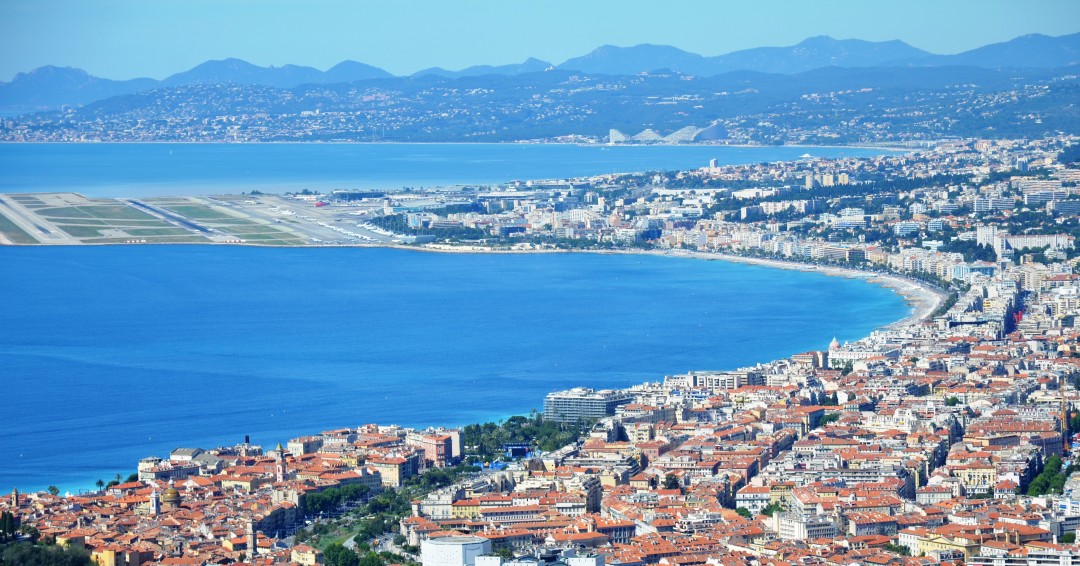
The Baie des Anges or ‘Angel’s Bay’ refers to the stunning Mediterranean coastline which stretches from the Riviera capital of Nice all the way to the Cap d’Antibes. Between these two destinations, the Bay also borders the towns of Saint Laurent du Var, Cagnes sur Mer, and Villeneuve Loubet.
But how did this Bay ultimately receive its name? Well, there’s actually two rather interesting stories that claim to be the inspiration behind this name! Which ever one you choose to believe is entirely up to you.
The first legend comes from Biblical times. Or more specifically, the story of Adam and Eve. Following their banishment from the Garden of Eden, Adam and Eve were said to be wandering lost through world. As the tale goes, they heard the fluttering of wings above their heads, and a band of heavenly angels swooped down to grab them and carry them across the sea, where they apparently landed right here in Nice. It is said that Adam and Eve thought that Nice was equally as beautiful as that of the Garden of Eden, so they decided to remain here and live out the rest of their lives. In fact, in the Old Town of Nice, you can find the Maison d’Adam et Eve, a building with an exterior mural depicting these two biblical characters.
Another story tells that the Niçoise fishermen have always called the bay by this name after the huge “Squatina Angelus” or “Angel Shark” which resided in the sea. This species of shark has little fins which almost resemble that of angel wings, hence the name.
17. Château de Bellet
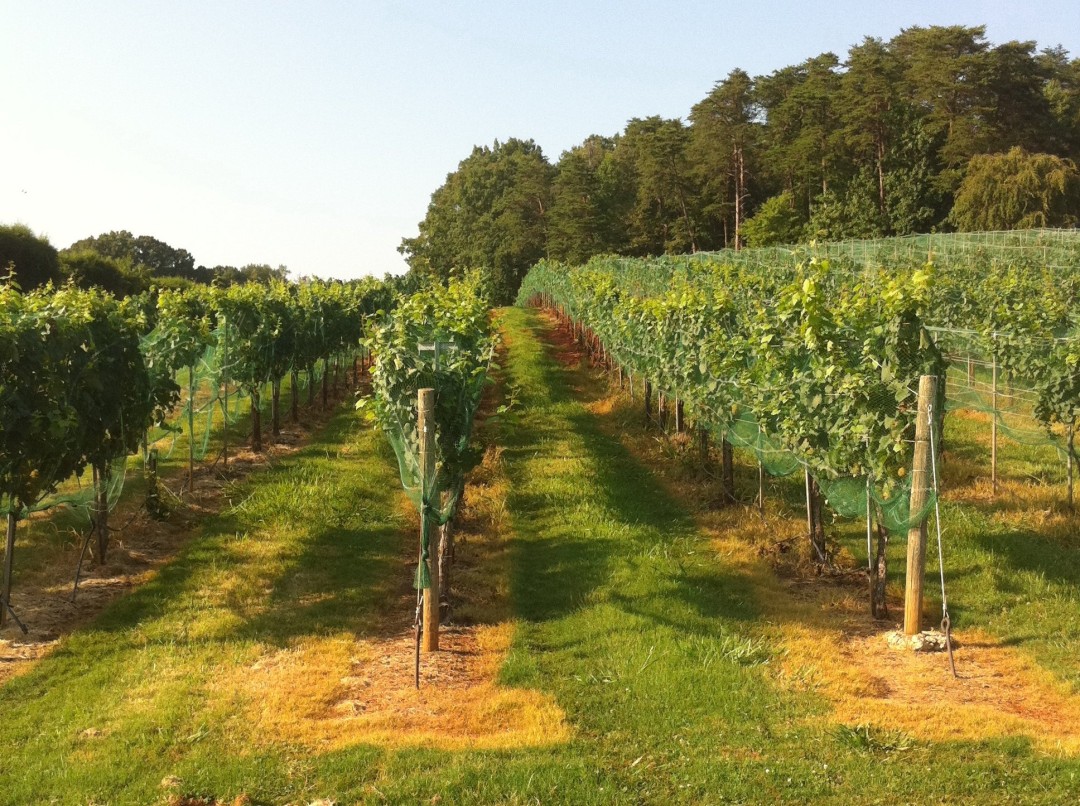
An interesting fact about Nice that not many people know of is that the north of Nice is home to its own small wine region. The rare grape varieties and the sulphurous soil of the Var region produce some of the most unique and rich flavours. In particular, we our known to produce Braquet, Folle Noire and Rolle.
Originally, the Château belonged to the noble family of Bellet. Today, the main vineyards surround the historic 19th century family Chapel of Agnès Roissard de Bellet. The vineyards of Château de Bellet have more than 70 years of wine experience. Only 20 minutes by car from downtown Nice, visitors can enjoy not only a tour of the beautiful grounds, but also a Wine Tasting Tour of some of the best quality wine in all of France.
18. Le Régina
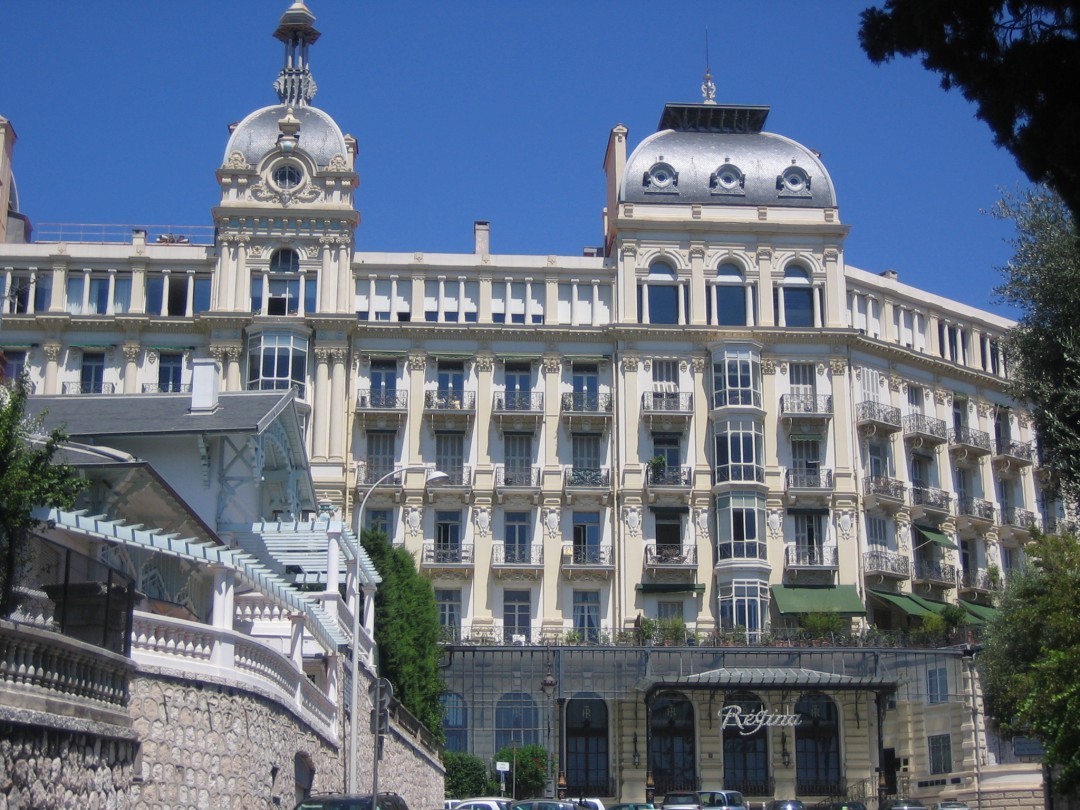
The Belle Époque was an era which thrived throughout France. The city of Nice is no exception. Possibly the most magnificent feature of this era found along the Riviera has to be the Excelsior Régina Palace. This grand 19th century hotel, designed specially for Queen Victoria herself, sits atop the Cimiez Hill, overlooking the stunning surrounding landscape.
Her majesty the Queen spent 3 consecutive winters in the magnificent hotel. But she wasn’t the only notable figure to walk through its halls. The world-famous artist Henri Matisse also lived in the Régina Hotel for some time, drawing inspiration from the vibrant Cimiez parks and the enchanting hotel itself. Hence why a Museum dedicated to the artist can be found right next to the hotel.
19. The Archaeological Crypt of Nice
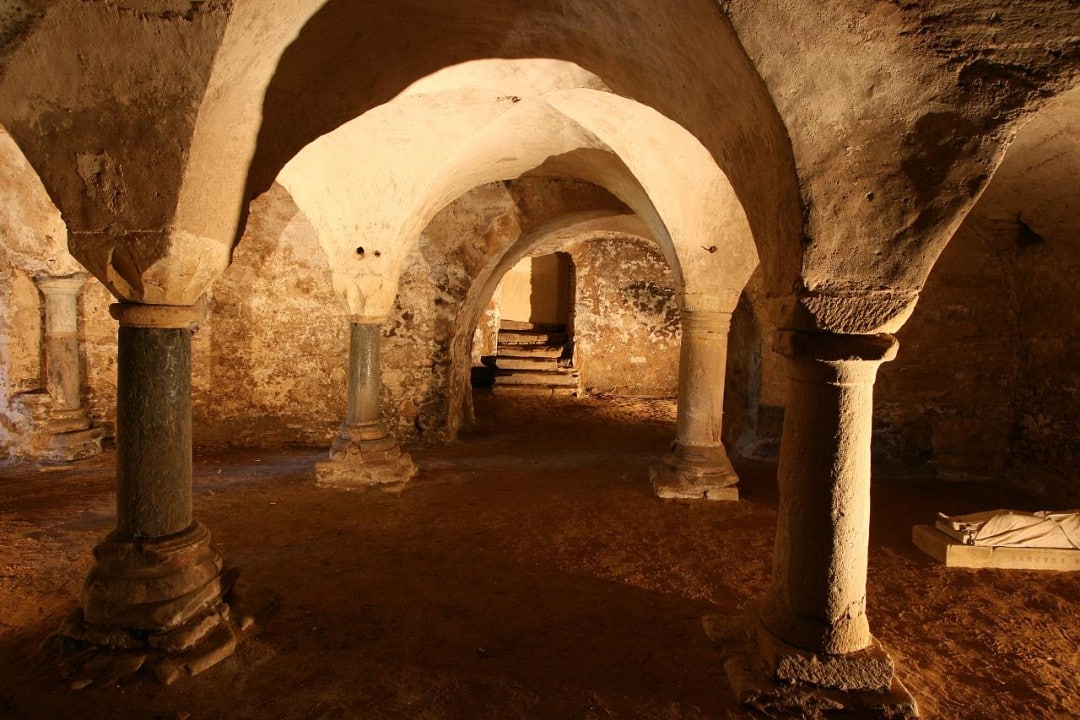
Construction workers discovered the archaeological crypt of Nice during excavations for the construction of the new Tramway line. While hammering up the foundations of Place Garibaldi, the workers noticed some strange stone structures just 10 cm below. They turned out to be the remains of the ancient city dating back to 1380! Place Garibaldi, it turns out, was the site of the entry to the walled fortress that was the Chateau, complete with turrets, a moat, a drawbridge, exterior walls and an aqueduct.
This exceptional site, comparable to the crypt of the Louvre in Paris, is a Historic Monument. It’s possible to visit the Garibaldi Crypt, but only 15 people can enter at a time. The tour lasts just under an hour, however, it only operates through French.
20. Nice and Turin –> Guardians of the Holy Shroud
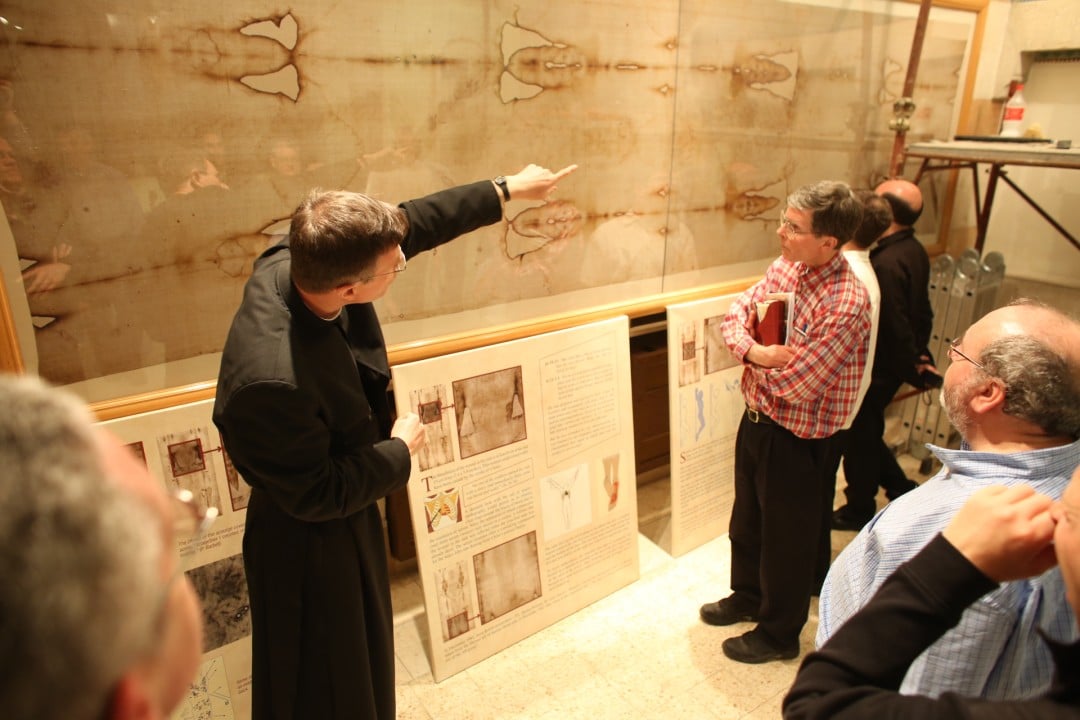
Since the 16th century, Nice was home to a sacred artefact known as the Holy Shroud. While seemingly insignificant at first glance, the linen cloth depicts a faint image of a man’s face. Many believe that the face is that of Jesus Christ, and the fabric is the burial shroud in which he was wrapped after crucifixion.
The shroud remained in Nice for several years, before the Duke of Savoy had it moved to Turin where a museum was dedicated to it. The shroud remains there today for visitors to see.
21. Pilou
The game ‘Pilou’ isn’t a particularly well-known sport. If you’ve ever watched ‘How to Catch a Thief’ by Alfred Hitchcock however, it might ring a bell.
This quirky sport was born in the streets of Nice in the post-war period. The pilou itself is a 25 cent coin with a hole in the centre, and a large piece of paper or rubber slotted through the hole. The aim of the game is to juggle the coin with your feet and make passes, a bit like football.
While you won’t see it played all too often anymore, a Pilou World Championship is held in the village of Coaraze just outside of Nice.
22. The Pointus
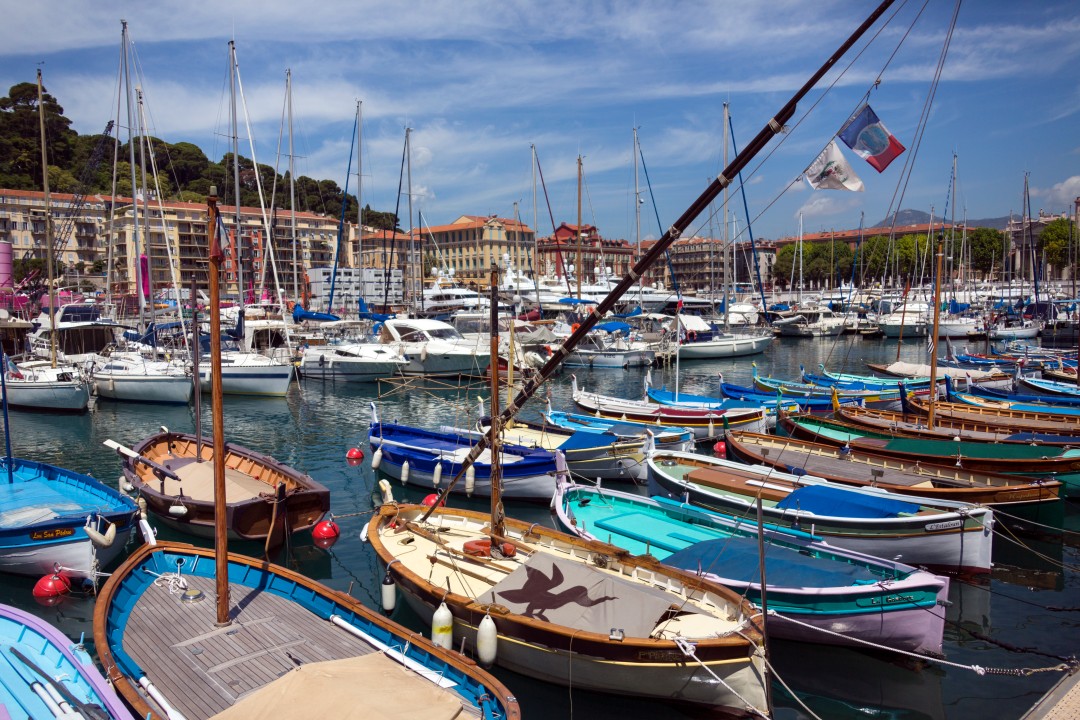
‘Les Pointus’ was the name given to the traditional working boats used by the fishermen of Nice. These 19th century boats were an upgrade from the previously used ‘Gourses’ which fell out of favour with the local Niçoise. While both boats sported the typical Latin sail, the Pointus now became equipped with oars.
If you visit the Old Port, along the Quai des Deux Emmanuel, you’ll find over 80 of these Pointus boats sitting in the harbour. Unlike any of the other boats here, the Pointus are allowed to stay here for free, under the condition that their owners keep them maintained. The series of vibrant coloured boats truly make for quite the aesthetic Instagram picture!
23. Promenade du Paillon
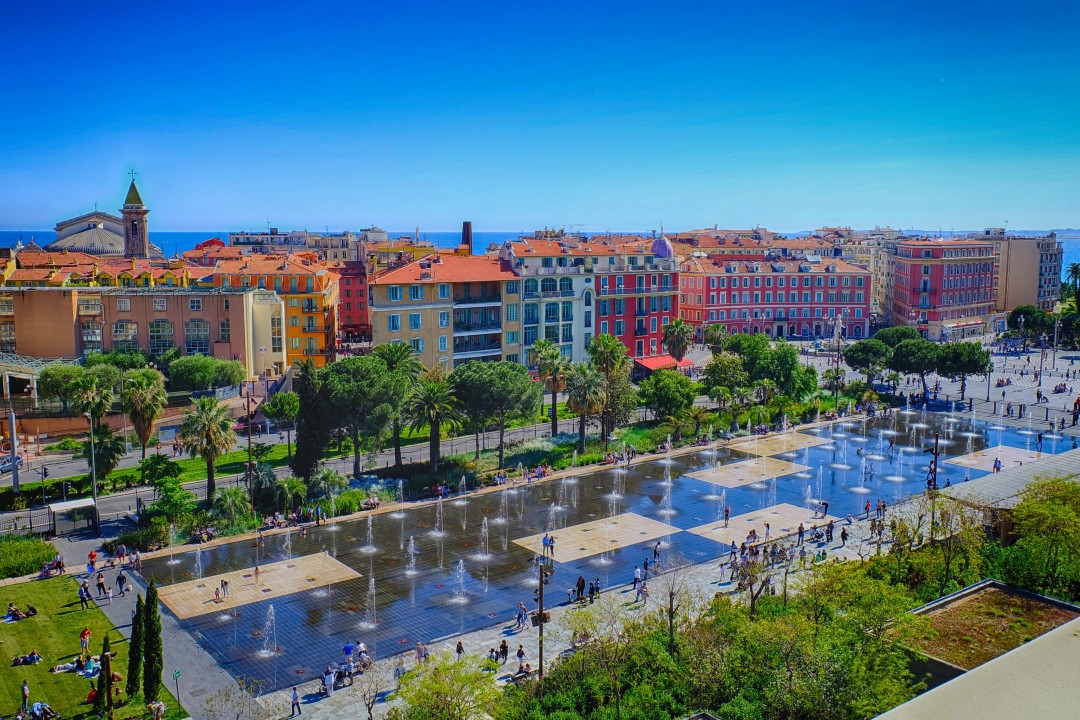
The Promenade du Paillon is a stunning park in the centre of Nice, just by Place Masséna. Inaugurated in 2013, the park is home to over 1,600 trees, 6,000 shrubs, grand water mirror and several play areas for children.
The park received its name from the Paillon River which flows entirely under the city of Nice. Before the Paillon was covered, the river was often full of children playing and women doing their laundry. Usually, this was completely safe as the Paillon is a rather slow flowing river. However, it could be a lovely sunny day down here in Nice, but it could be raining up in the mountains where the source of the river began. This would lead to the river flowing very quickly very suddenly and flooding.
So one man, it was his job to stay up by the mountains, and when he noticed the river begin to flood, he would come racing down on his horse screaming “The Paillon is coming!”. But one day, as the story goes, three women did not hear the man and got trapped. The men jumped in and managed to save two of the women but became too tired and were unable to save the last woman. So, in a classic French fashion, the Niçoise threw the men some Cognac (a very strong liquor), it rejuvenated them, and they were able to save the last woman. A happy end for all!
24. The Origins of La Rue Droite
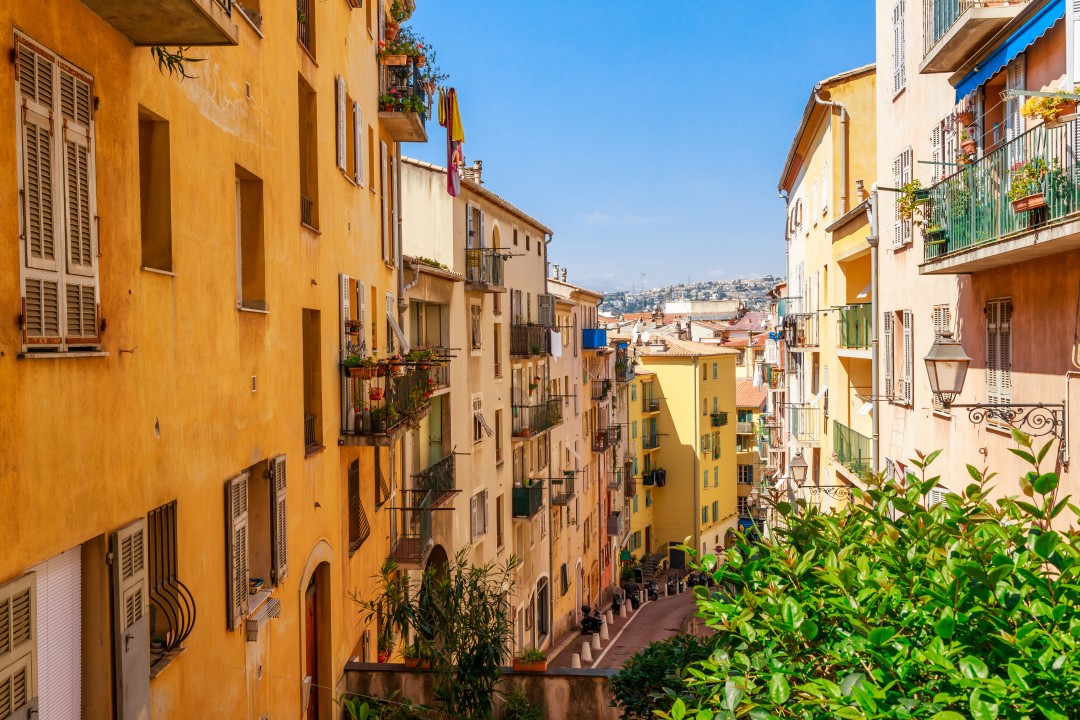
This street, located in the heart of the Old Town, is one of the oldest in the entire city. Originally, the street was called “Drecha” meaning ‘Direct’ due to its straight narrow route linking the Port to Porte Pairolière. A route who’s function was to transport goods more efficiently through the city.
La Rue Droite was once home to many noble or wealthy families in Nice. It is on this street for example where you’ll find the Palais Lascaris. You’ll also discover a number of medieval-style buildings. Many of which are adorned with engraved lintels. The structure at number 14 for example is inscribed with “JUSTUS JUDEX IHS” (Christ is my judge). Number 21 with “SPES MEA DEUS” (God is my hope). And Christ’s monogram, “I H S” (Iesus Hominum Salvator), being scrawled in several dwelling as a way to bring protection.
25. Romain Gary
The renowned novelist Romain Gary is a beloved figure here in Nice. Though originally born in Vilnius, Lithuania, Gary considered France just as much his home as any French citizen. Gary moved to Nice with his mother at the age of 14. Though he did not remain in Nice during his adult years, he returned regularly during his career. Often drawing inspiration from the city and the memories he had here. A particular example of this can be seen in his well-known novel ‘La Promesse de l’Aube’ (A Promise at Dawn).
Gary is the only author to ever win the Prix Goncourt under two names. Here in Nice, we threw special festivities to celebrate the centenary of his birth. And in commemoration of his success, the municipality put up a commemorative plaque at 7 Boulevard François-Grosso, the house where he once lived.
26. Nux Vomica
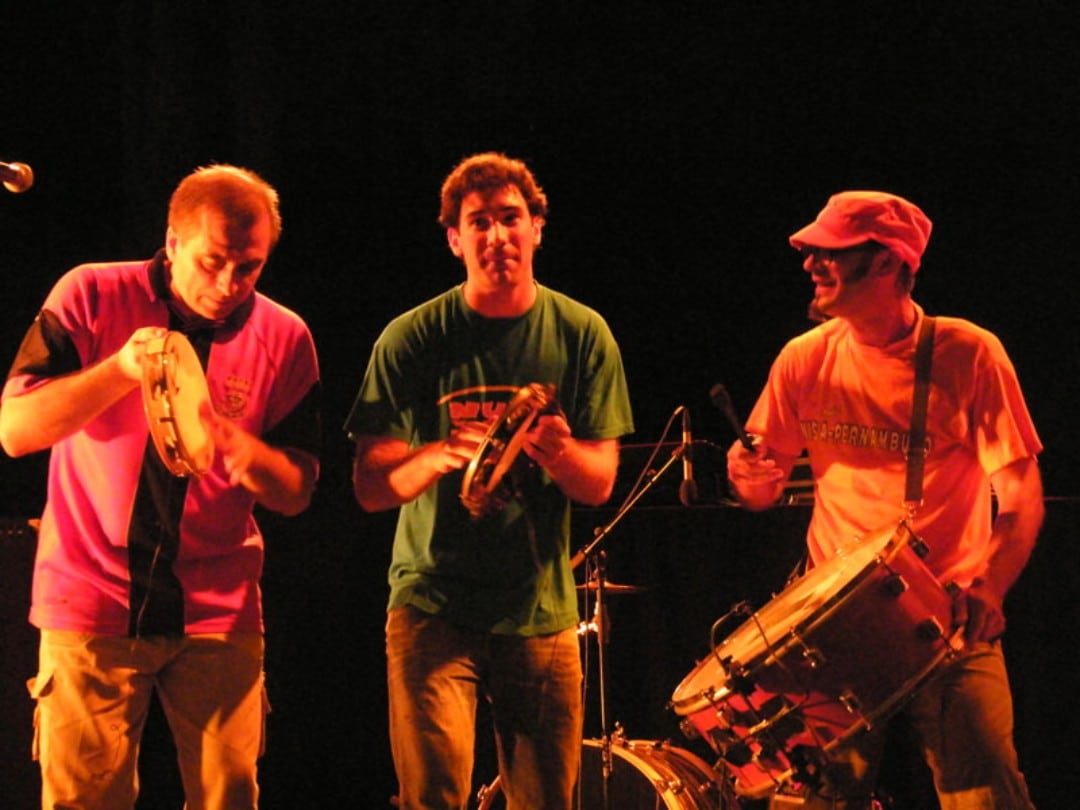
Not to be confused with the poisonous nut by the same name, the ‘Nux Vomica’ of Nice are a group of contemporary artists. The aims of the group were to promote Niçoise culture in the rest of the world.
The group is most famously known for hosting their very own Independent Carnival in the Saint-Roch area of Nice. The purpose of the Carnival was to uphold some of the traditional values held by those in the more rural areas of Nice. The Independent Carnival strived to become a place of freedom, creation and reflection.
The 8 members of Nux Vomica went on to become a fairly successful music group. Touring the world with their traditional Niçard songs and festive melodies. All of which aimed to pass on the idea of Nice culture and life.
27. The Red Eagle

A community’s flag represents all that the community stands for. And that is certainly true in the case of Nice. The red eagle has graced the Nice flag from as early as the 15th century. At the time, neighbouring Mediterranean cities such as Genoa, Toulon and Marseille preferred the more peaceful emblem of the cross, but Nice chose a more warlike symbol.
The red and white colours of the flag belong to the House of Savoy, the ruling family of Nice at the time. While the eagle itself represents pride and strength. Words which can certainly be used to describe Nice over its lifetime. Nice is undoubtedly a city known for its endurance and adaptive nature.
Nice Fun Facts
28. The Famous Promenade des Anglais Originally had Another Name!
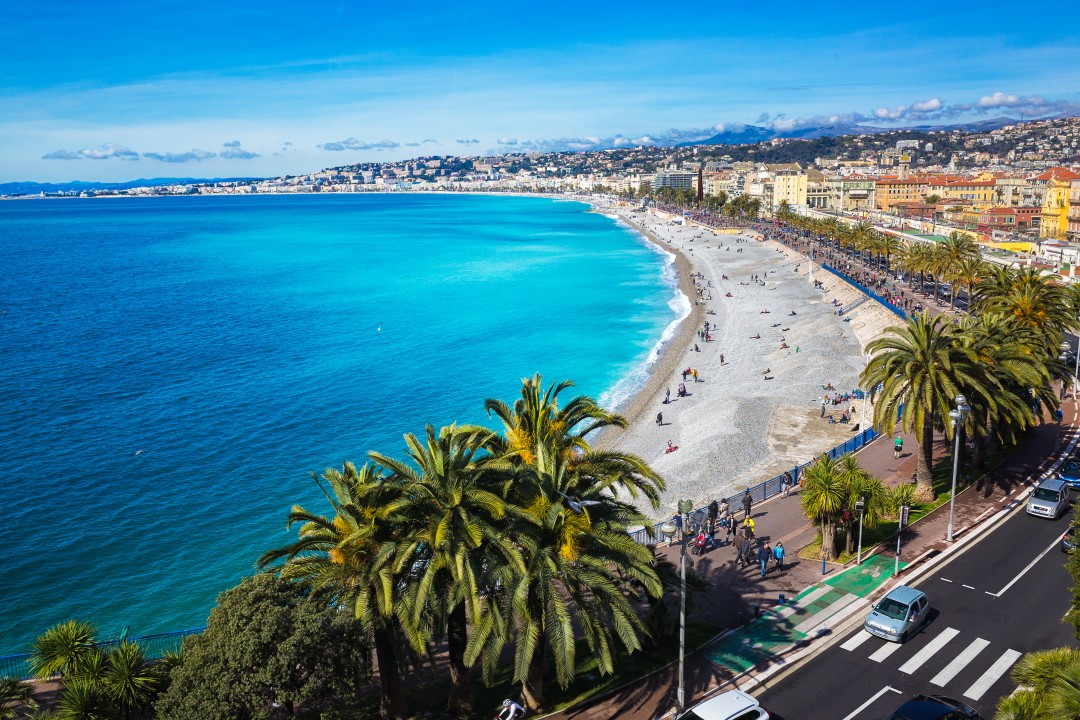
The world-renowned Promenade des Anglais is certainly one of the most famous attractions in all of France. But did you know it wasn’t always called the Promenade des Anglais?!
Originally, the walkway was referred to as the “Strada del Littorale” (Coastal Road). However, over time, the local Niçoise began calling it the Promenade des Anglais. Both for the fact that it was the British aristocracy who commissioned the building of the walkway. And also for the fact the Promenade would be full of British visitors soaking up the sun (a pleasant change from their usual dreary weather back home in the UK).
To make it official, the locals pushed the First Consul of Nice to officially change the name in 1844. And the rest is history!
29. Elton John’s House
There’s a reason Nice is France’s second most visited city after Paris. Its blend of culture, attractions, history, cuisine and natural beauty make it every tourist’s dream destination. Hence why Nice has been known to attract celebrities and tourists alike. Even the famous Elton John has fallen for the Riviera’s charm!
Elton’s ‘Summer Palace’ sits high up in the mountains of Nice entirely overlooking the Mediterranean coastline. This stunning 1920’s villa is as extravagant as the singer himself. If you fancy your chances of perhaps bumping into the celebrity in the streets, then maybe consider checking out La Petite Maison, the favourite restaurant of all our local celebrities.
30. Nice is home to the very first Inhabited Sculpture –> La Tête Carrée
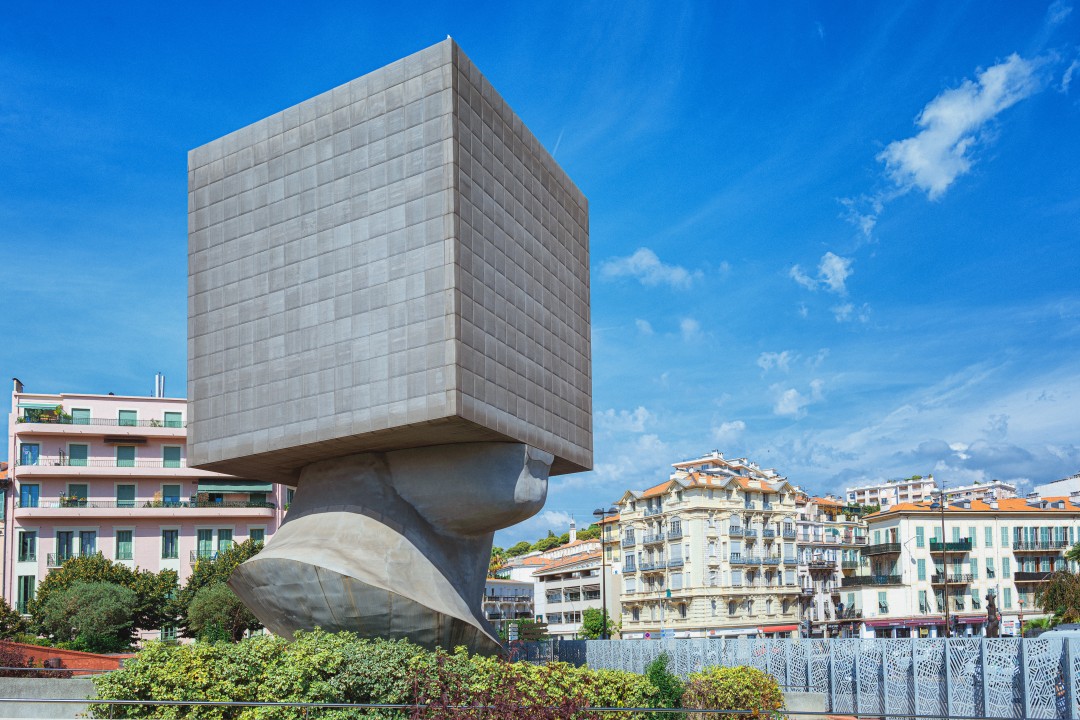
Built by architects Francis Chapuis, Yves Bayard and sculptor Sacha Sosno, the ‘Tête Carrée’ (Square Head) is the very first habitable sculpture on the planet! Standing at 30 meters high, this astonishing building houses three floors of the Louis-Nucéra library. At night, these three floors are entirely lit up and give you a clear view of the extensive book collection held within.
31. Stamps Highlighting the Best of Nice
As celebration of Nice being a part of France for 160 years, La Poste, in partnership with the city of Nice released a new collection of stamps devoted to the city’s main sights. While not only a fun idea, the stamps have also been a great way to promote Nice’s tourism and culture.
Individuals can purchase the booklet of 8 stamps for EUR 9.50 in any local post office. These wonderful stamps depict popular attractions such as the Promenade des Anglais, the Old Port Lympia, Nice’s famous Blue Chairs and many more!
32. Nice’s Coastal Path
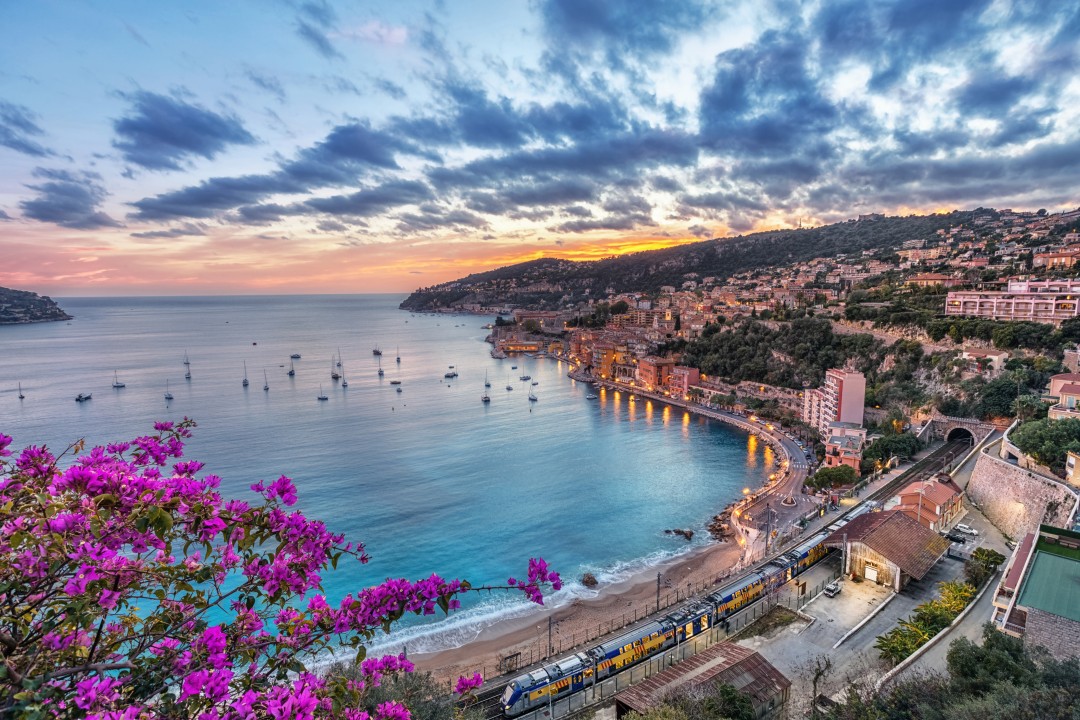
When it comes to beautiful walkways, Nice has plenty of options. But possibly the most spectacular walking trail has to be the coastal path from Nice to Villefranche-sur-Mer. Taking between 2-3 hours, this trail will take you entirely along the Mediterranean coastline, where you’ll get breathtaking views of Nice’s Bay and the many coves littered between the cliffs.
The best places to begin your walk is either from the Old Port, Coco Beach or the Reserve Beach. And if you want to bring yourself a small picnic then there are plenty of great spots and park benches for you to take advantage of along the way!
33. Mont Chauve
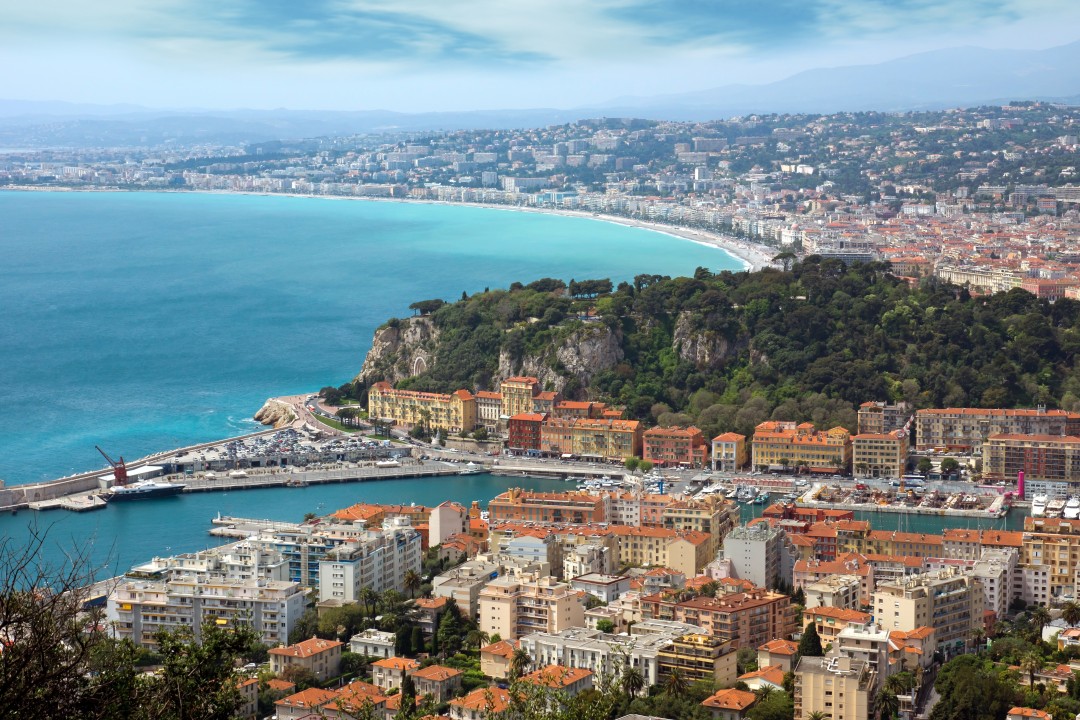
Mont Chauve, or ‘Bald Mountain’, is one of the most amazing viewpoints in Nice. Which is a shame considering not many people make the trek to get to it.
Admittedly, it can be a bit of a struggle to get to. You can drive the majority of the way. However, the road is quite narrow with a couple of sharp turns. The last kilometre of the journey is closed-off by a barrier, so you’ll have to walk the rest of the way. Once you make it to the fort at the top, what you see will make all that effort worth it.
The unobstructed 360 degree panoramic view allows you to see the entirety of Nice, and all the way out past Cannes. You truly won’t find a better look out point along the entire Riviera!
34. Nissa la Bella
Quite often you’ll hear people refer to the city of Nice by its nickname ‘Nissa la Bella’ (Nice the Beautiful). But did you know that Nissa la Bella is also the name of the city’s anthem?
Written in 1903 by Menica Rondelly, the hymn is in the local dialect of Niçard and is used by the OGC Nice football team.
35. The Mysterious Prison –> Lou Barri Lonc

At the end of the 18th century, the House of Savoy decided to build a prison to house a workforce close to the site of the digging of the harbour. Which would later become Port Lympia. Originally, the prison was no more than a long stone wall closed by imposing wooden doors with huge locks. Hence the name ‘Lou Barri Lonc’ which means ‘The Long Wall’. The prison was in use all the way until 1852 when France abolished the free port.
A fun little fact about the prison is that the stone used in its construction was taken from the ruins of the Old Castle of Nice which King Louis XIV destroyed in 1706.
36. La Maison des Nains
One of many quirky attractions we have here in Nice is ‘La Maison des Nains’ or the ‘Dwarf House’. Situated on Avenue Désambrois, this famous house gets its nickname from its strange proportions. This medieval-style home with its comedically tiny doors and low floors truly is an enigma.
Unfortunately, however, the little house has never welcomed Snow White’s companions, nor Hobbits. Its small and unusual stature is all a result of poor planning. The architect, Trachel, made the mistake of lowering its foundations by 1.50m! Causing the lower half of the house to be partially buried. Though you may not be able to enter the peculiar house, it certainly makes for quite the picture!
37. Urban Art arrives in Nice
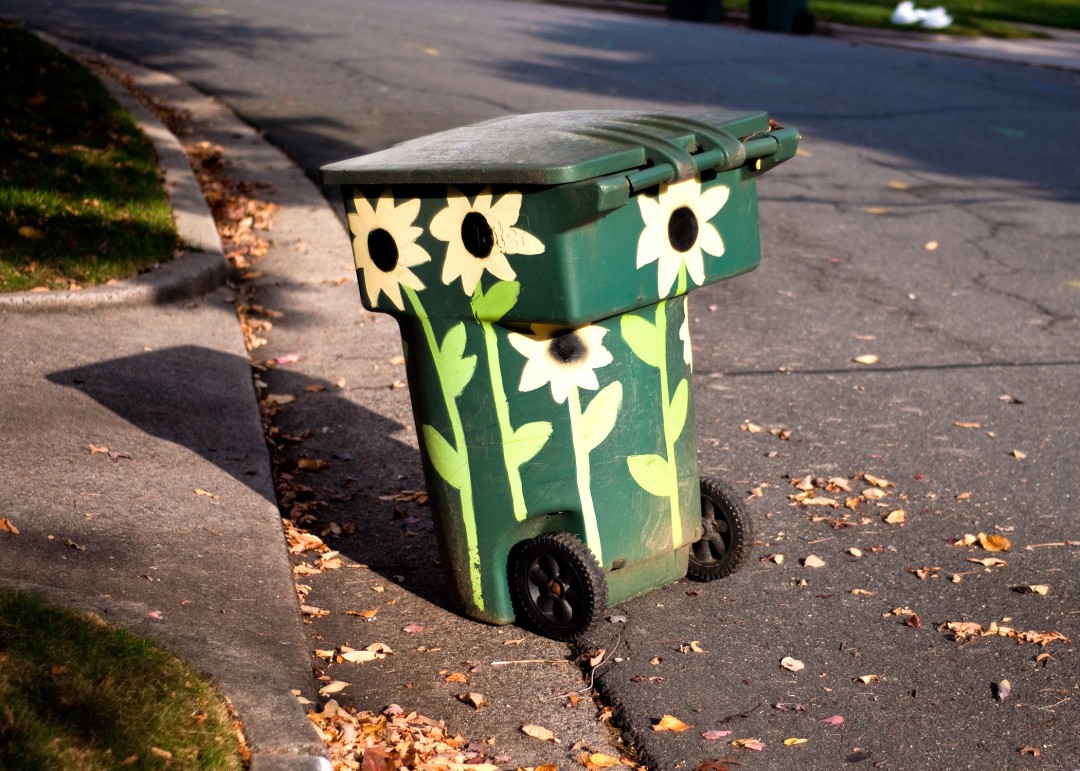
Art is something that can be seen throughout the city of Nice. Whether it’s the many Art Galleries, or our famous Painted Windows or even our Open Sky Art Museum, there’s plenty that will catch your eye. And even more so now with the amount of Urban Art sweeping through the city!
Local street artists such as Brian Caddie, Faben, Anabelle and Moustache Bleu have taken to transforming garbage containers into works of art. Hundreds of containers throughout the city have been revamped and bring Nice’s quirky side even more to life.
The group behind this trend claim that they hope it will make inhabitants more aware of the importance of recycling their waste. The aim is to spread awareness on the importance of biodiversity and respect for nature.
38. The Plage de la Réserve
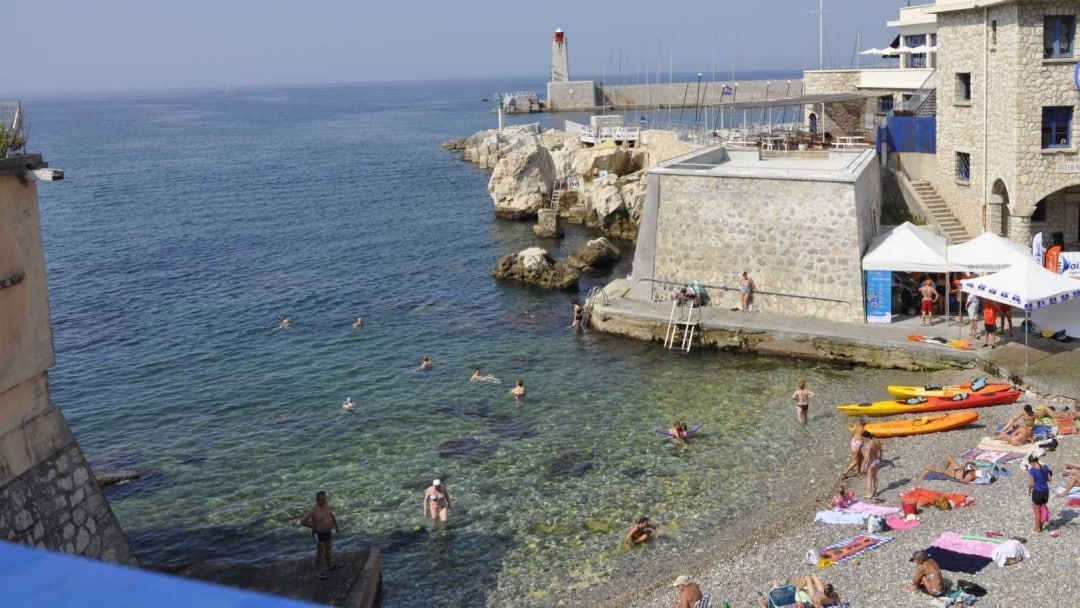
If you follow the entirety of the Promenade des Anglais, there isn’t a single spot where you won’t find fantastic pebble beach and Mediterranean coastline. However, as mesmerising as Nice’s beaches are, they can tend to get a little overcrowded. Especially during the summer months.
However, not to worry! Just like anywhere, Nice too has its very own hidden gems. Away from prying eyes, the Plage de la Réserve (Reserve Beach) is the perfect getaway spot. Tucked away in a peaceful little corner next to the Port, it is overhung by the popular Restaurant de la Réserve. So after you’re finished with your fun-filled day of sunbathing and swimming, pop on up for a delicious bite to eat!
39. The Falicon Pyramid and the Ratapignata Cave

Just 8.5 km north of Nice you’ll find the vibrant village of Falicon. On the outskirts of this hilltop village, you’ll find the Falicon Pyramid, one of the few in Europe. Certainly not the largest of structures, but definitely an impressive sight nonetheless. Many people speculate as to what a pyramid is doing in the South of France. Many believe it was a place of worship for Pythia or Mithra. But ultimately, its true purpose remains a mystery.
But the pyramid isn’t the only sight Falicon has to offer. In fact, the Falicon Pyramid overlooks a natural abyss known as the Ratapignata Cave (Cave of Bats). Discovered in 1803, the cave is home to an impressive formation of stalagmite columns which split the cave into several rooms. It really is spectacular if you’re brave enough to explore the inside!
40. Rauba-Capèu
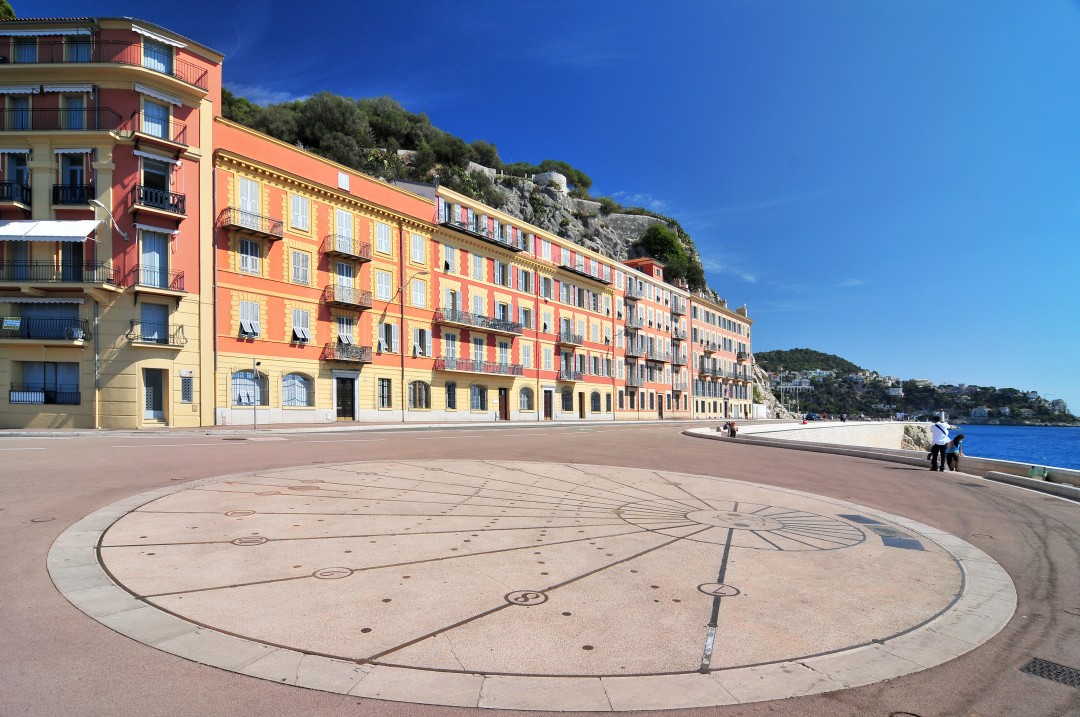
Built in 1770, the wharf’s original function was to connect the Old Port to the Cours Saleya Market. However, over time, as its functionality became less important, the city of Nice decided to renovate it. An act which awarded the wharf first prize at the Trophées de l’Aménagement Urbain (Urban Layout Awards) in 2004. Today, you’ll often find the Rauba-Capèu swarming with people. The wharf offers an incomparable view of the Baie des Anges. And is also home to our beloved ‘I Love Nice’ sign. As well as our impressive war memorial etched into the side of Castle Hill.
The wharf is a great place to come and hang out with friends during the day. However, be warned, it received its name for a reason! The name ‘Rauba-Capèu’ means ‘Hat Thief’ in English. A poetic name for this emblematic place subjected to the wind.
Discover Nice
Interested in discover all that Nice has to offer for yourself? Then there’s no greater way to do it than with a Private Walking Tour of Nice. Along with your very own personal guide, you’ll discover the hidden gems of the city. As well as the fascinating stories that come along with them. What’s more, with our private tour options, you have the freedom to customise the tour to suit you and your entourage.
So if you’re ready to discover the very best of the French Riviera, then this is the place to do it! For queries and bookings, feel free to contact us via our email: info@rivierabarcrawl.com



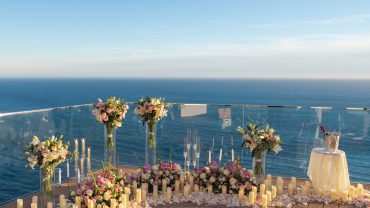


Comment (0)